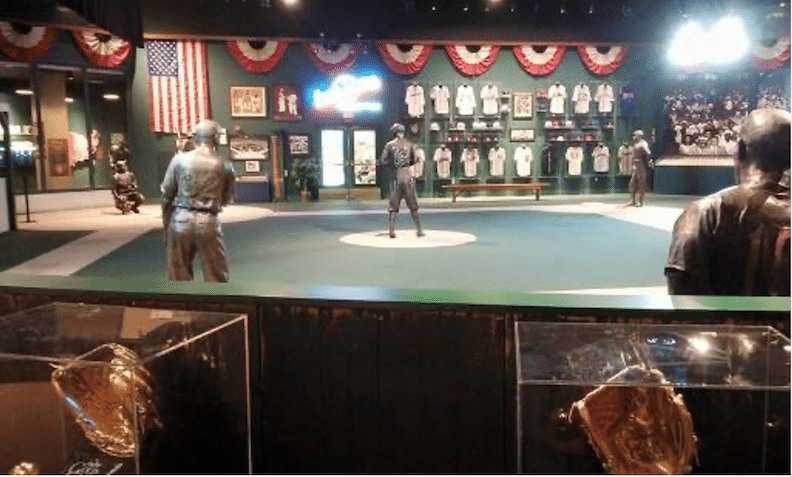
The Field of Legends allows visitors to get up close on personal with 12 replica statues of legends of the Negro Leagues. (photo courtesy of Tripadvisor)
By Tyler Melito
Black History Month is a time to remember the significant contributions Afro Americans have made to our society. This certainly is the case in sports. Whether it’s Tiger Woods in golf or football’s Jim Brown, who dominated the NFL during his nine year career, black superstars from Muhammad Ali and Jesse Owens to Bill Russell and Arthur Ashe have risen to the top of their respective sports.
In baseball, a game created in the 19th Century, segregation prevailed until 1947 when Jackie Robinson walked on the field for the Brooklyn Dodgers. Robinson’s contributions to baseball and the civil rights movement are well documented at the Baseball Hall of Fame in Cooperstown, NY, which is in the process of expanding its exhibits on Black players. In addition to Cooperstown, baseball fans interested in the complete history of Negro baseball in America should consider a trip to Kansas City, home to the Negro Leagues Baseball Museum.
Recognized by the U.S. Congress in 2006 as “America’s National Negro Leagues Baseball Museum,” the facility is a welcoming repository of baseball lore. Centered around the Field of Legends, a miniaturized ball field with 12 replica statues of some of the Negro Leagues’ most impactful players, the museum tells the story of Rube Foster who started the National Negro League in 1920 with eight teams.
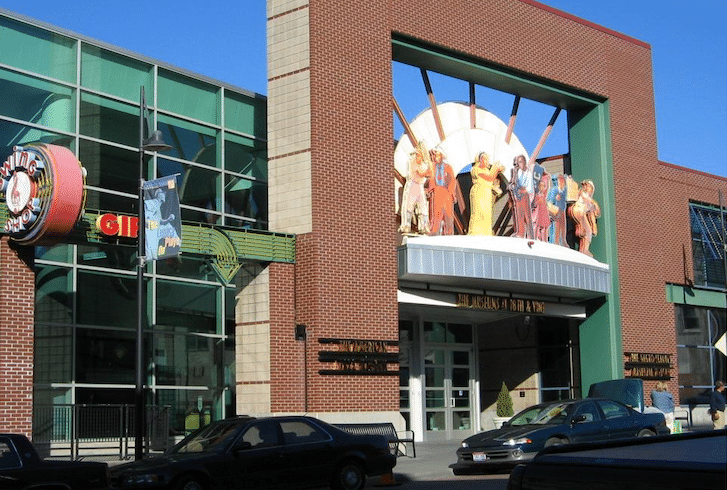
The Negro Leagues Baseball Museum has been open since 1990, giving baseball fans a chance to learn about the history of the league(photo courtesy of Wikimedia)
The Kansas City Monarchs were one of the flagship teams of the Negro Leagues, and with the help of the Negro Leagues Museum, Kansas City’s American Association minor league club this summer will be reborn as the Kansas City Monarchs.The return of the Monarchs is nothing less than “historic,” says Negro League Baseball Museum President Bob Kendrick.
“This exciting partnership celebrates Kansas City’s rich baseball heritage and becomes an important extension of the work we’re doing to educate the public about the history of the Negro Leagues,” says Kendrick. “We are thrilled that the proud legacy of the great Kansas City Monarchs will take the field again and look forward to sharing our story through a myriad of opportunities made possible through this historic alliance.”
The Iron Handed Judge
Despite their obvious athleticism, Black players were prohibited from playing in the Major Leagues by the game’s first commissioner, Kenesaw Mountain Landis. A former federal jurist, Landis was hired as commissioner to restore confidence in the game after the Black Sox scandal in which eight members of the Chicago White Sox conspired to lose the 1919 World Series. Landis’ expulsion of the eight players and campaign to ban organized gamblers from the sport strengthened his reputation to the extent that no baseball executive was able to overrule his bias against integrating baseball.
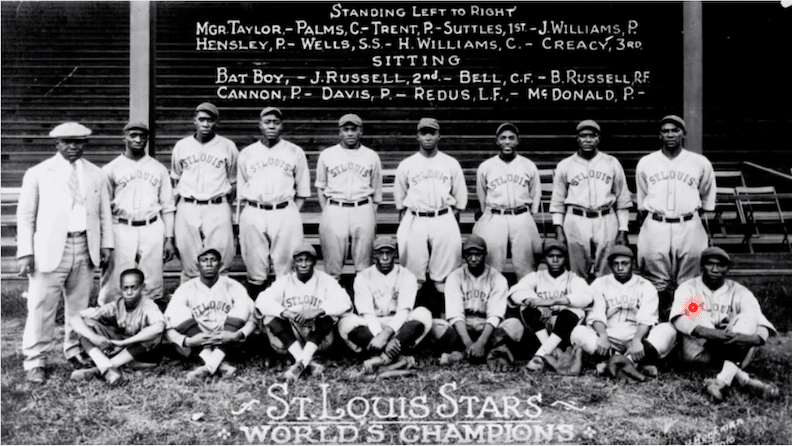
The St. Louis Stars were Negro League World Champions. They now receive recognition in both Kansas City and Cooperstown, NY.
Landis insisted up until his death in 1944 that Negros were not banned from Major League baseball, but his actions often betrayed bias. In June 1942, the Negro league Kansas City Monarchs played several games against the white “Dizzy Dean All-Stars” at major league ballparks, attracting large crowds. After three games, all won by the Monarchs, Landis ordered a fourth canceled on the ground that the games were outdrawing major league contests.
Parallel Universe
Landis’ ruling coincided with a complaint by Dodger manager Leo Durocher that there was a “grapevine understanding” keeping blacks out of baseball.” Durocher was summoned to Landis’ office and recanted his claim after meeting with the commissioner.
Landis grip on baseball ended with his death in 1944 and by 1945 the Brooklyn Dodgers had hired Jackie Robinson to play for their Montreal minor league affiliate.
The Negro National Leagues disbanded in 1948 but not before providing a platform to showcase the talent of players like Hank Aaron, Jackie Robinson, Satchel Paige, Willie Mays, and Ernie Banks, all of whom would be inducted into the National Baseball Hall of Fame. Says baseball writer Steven Goldman: “The leagues died having served their purpose, which was to shine a light on African-American ballplayers.”
The Negro League Museum is not the only baseball attraction in Kansas City. Just 10 minutes away from the Negro Leagues Museum is the Royals Hall of Fame which honors the history of the Kansas City Royals as well as the history of baseball in Kansas City as a whole. Baseball has been played in the city dating as far back as the 1880s, and though the Royals and their history is the primary focus of the museum, it also offers displays honoring the Kansas City Monarchs.
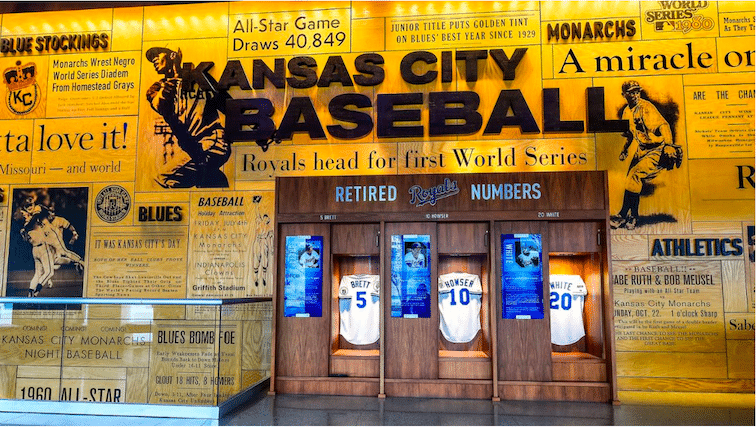
The Kansas City Royals Hall of Fame at Kaufman Stadium offers colorful facts on all of the baseball teams that have called Kansas City home.
“They are included in many of our exhibits because the facility, covers the entire history of baseball in Kansas City,” says Curt Nelson, Director of the Royals Hall of Fame. “So there is a lot of Monarchs’ material that fits in there… At different times of the year we have different displays that might include Monarchs material.”
The Royals Hall of Fame also has numerous statues and displays of Buck O’Neil, who spent the majority of his career with the Monarchs and was a key factor in the franchise’s history from 1938 to 1955. Every April, around Jackie Robinson Day, the Royals Hall of Fame honors Jackie Robinson. Robinson is known for breaking the MLB color barrier with the Dodgers, but he began his professional baseball career with the Monarchs in 1945.
Outside the Lines
Kansas City is more than baseball and barbeque. For those who like military history, Kansas City is home to the National WWI Museum and Memorial. The Museum prides itself not only for collecting and preserving historical artifacts from WWI, but also providing an educational experience for all who visit.
Among the main exhibits is a life-sized trench with a Chronology Wall, which illustrates the various events of the war. It’s also possible to walk over the Paul Sunderland Bridge, which is suspended over a poppy field with each poppy representing 1,000 deaths from the war (9,000,000 people lost their lives during WWI). Exhibits change several times a year to give new perspectives on different aspects of the war.
If you need to do some serious shopping or just want to browse the place to go is Country Club Plaza. Located four miles south of downtown Kansas City, the Plaza opened in 1923 and today is home to 129 stores, bakeries and boutiques spread across 55 acres.
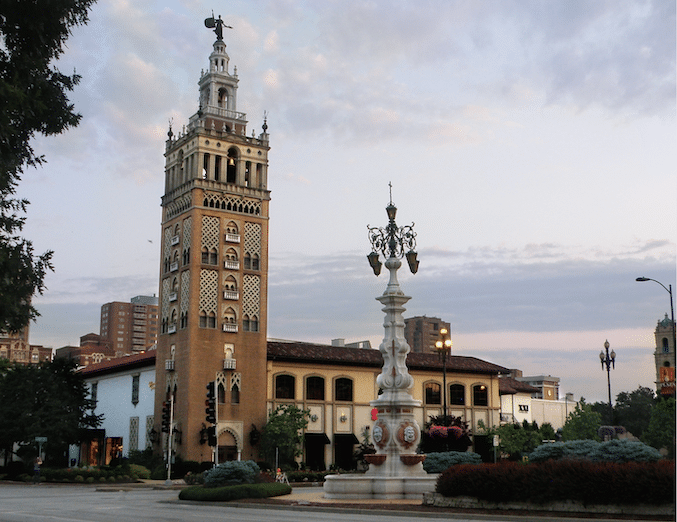
The Giralda Tower in the Country Club Plaza is a replica of the full size version at the Cathedral of Seville. Grom the tower shops extend outward for 15 city blocks.
If there is one thing that Kansas City is known for it’s barbecue. At Kauffman Stadium where the Royals play barbecue is served in a plastic baseball helmet. But if you prefer dining that’s a bit more formal head to Arthur Bryant’s Barbecue on Brooklyn Avenue. Arthur Bryant, aka as “the King of Ribs,” is said to be the originator of the ‘burnt end,’ a deliciously charred hunk of smoked brisket. The restaurant has been around for 71 years and although Bryant passed away in 1981, they still hold true to his style of cooking and hospitality.
Another great barbecue joint is Joe’s Kansas City Bar-B-Que. The original location opened in 1996 on the Kansas side of Kansas City, in a gas station on West 47th Ave. The most popular dish the restaurant offers is their “Z-Man Sandwich.” They take slow-smoked beef brisket, put some smoked provolone cheese, two crispy onion rings, and their original BBQ sauce on top. It all sits inside a toasted Kaiser roll bun.
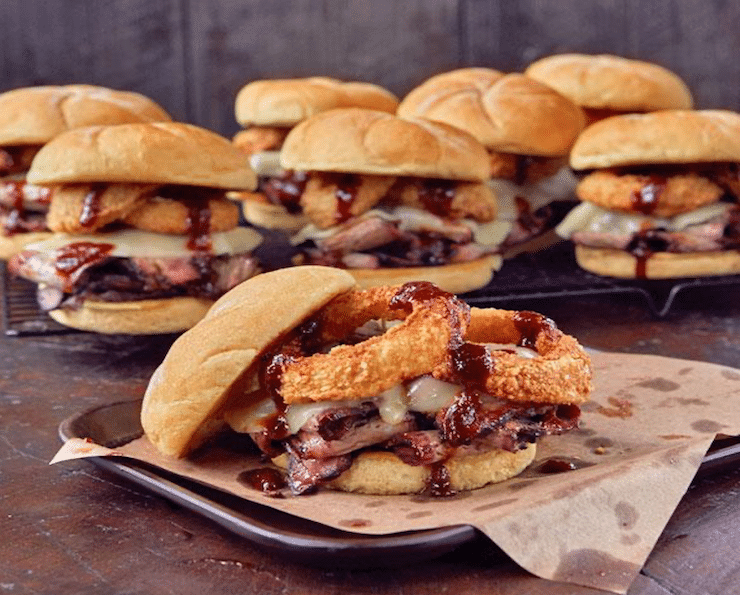
The Z-Man Sandwich
“We take high quality products and smoke them low and slow over Missouri White Oak wood,” says marketing director Eric Tadda. “The process takes longer but we feel like the smoky flavors that get infused in the meat make it unique and extremely popular.”
Hall of Fame
The National Baseball Hall of Fame in Cooperstown has long celebrated the history of the Negro Leagues, despite their stats not presently being a part of MLB’s record books. “Negro Leaguers are incorporated in a number of ways,” says Hall of Fame VP of Communications & Education Jon Shestakofsky. “In the plaque gallery itself, there are 35 individuals who have been elected to the Hall of Fame, who made their biggest impact on baseball as part of the Negro Leagues. Their plaques are hanging in our famous plaque gallery alongside and incorporated into the group of 333 members of our Hall of Fame.”
Shestakofsky notes that, one of the Hall’s primary functions is to educate. Teach those who visit about the history of the game. Hank Aaron and Jackie Robinson both had their careers start in the Negro Leagues and both of those exhibits look at the black experience in baseball’s history.
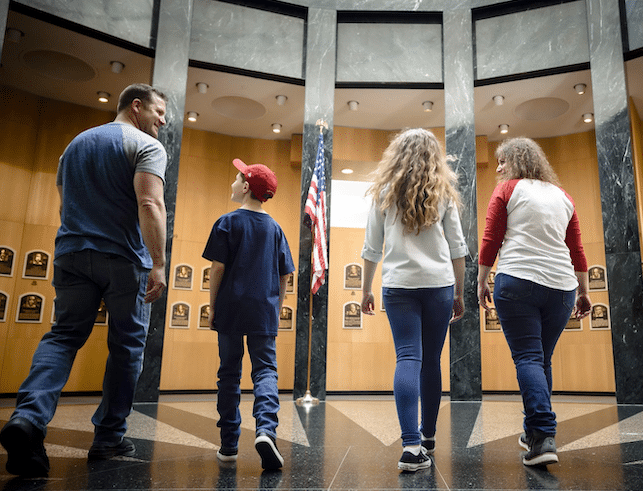
Inside the National Baseball Hall of Fame’s Plaque Gallery Many Black HOF members had careers that either started in, or were predominantly in the Negro Leagues (courtesy of the National Baseball Hall of Fame and Museum)
Not all Negro League players were as fortunate to make the transition, but with MLB’s decision, their contributions to the game from a statistical standpoint will now be recognized.
Preparations are still in the early stages for incorporation of the Negro League’s stats into Major League Baseball’s record books. According to the Elias Sports Bureau, who is the official stat keeper for MLB, this is not a process that will be done overnight. Rather it could take months, or even years, to gather and verify all the data from the Negro Leagues.
Major League Baseball’s decision to incorporate the stats of the Negro Leagues stats was a landmark one. Baseball fans now will get the chance to learn about a part of the game that may not be longer with us, but is still an immense part of our collective culture.![]()
Tyler Melito is a junior at Syracuse University, pursuing a degree in Broadcast & Digital Journalism at the S.I. Newhouse School of Public Communications with a minor in Sport Management.

